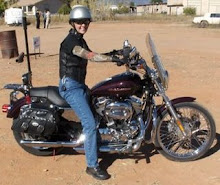Through the Panama Canal
http://en.wikipedia.org/wiki/Panama_Canal
The Panama Canal is a 77 km (48 mi) ship canal that joins the Atlantic Ocean and the Pacific ocean and a key conduit for international maritime trade. Annual traffic has risen from about 1,000 ships in the canal's early days to 14,702 vessels in 2008, displacing a total 309.6 million Panama Canal/Universal Measurement System (PC/UMS) tons.
One of the largest and most difficult engineering projects ever undertaken, the canal had an enormous impact on shipping between the two oceans, replacing the long and treacherous route via the Drake Passage and Cape Horn at the southernmost tip of South America. A ship sailing from New York to San Francisco via the canal travels 9,500 km (6,000 miles), well under half the 22,500 km (14,000 miles) route around Cape Horn.[1]
The concept of a canal near Panama dates to the early 16th century. The first attempt to construct a canal began in 1880 under French leadership, but was abandoned after 21,900 workers died, largely from disease (particularly malaria and yellow fever) and landslides. The United States launched a second effort, incurring a further 5,600 deaths but succeeding in opening the canal in 1914.
While the Pacific Ocean is west of the isthmus and the Atlantic to the east, the 8- to 10-hour journey through the canal from the Pacific to the Atlantic is one from southeast to northwest. This is a result of the isthmus's "curving back on itself" in the region of the canal. The Bridge of the Americas at the Pacific end is about a third of a degree of longitude east of the end near Colon on the Atlantic.[2]
The maximum size of vessel that can use the canal is known as Panamax; an increasing number of modern ships exceed this limit, and are known as post-Panamax or super-Panamax
Many people were on deck before sunrise to watch as our ship approached the first lock of the Panama Canal. This first set of photos are all about getting through the first set of locks, the Gatun Locks.













These machines are called Mules and guide the ship through the narrow lock so the ship doesn't smash up against the side.



We were served famous Panama Rolls and coffee on deck...















7 Comments:
Very cool pictures. How many locks are there?
There are 6 locks all together. There's three in the first set, one in the second set and 2 in the third set.
Thanks for posting ALL the pictures! They were wonderful! ;)
Thanks Mary Ellen!!
The Oosterdam is my favorite cruise ship - I've been on her several times, but just on the Mexican Riviera. I'd love to do the Panama Canal cruise someday. Thanks for sharing...
Definitely an experience of a lifetime! Did you go through and come up the other side, or turn around and go back?
Diana, we kept going and ended our cruise in San Diego.
Post a Comment
<< Home